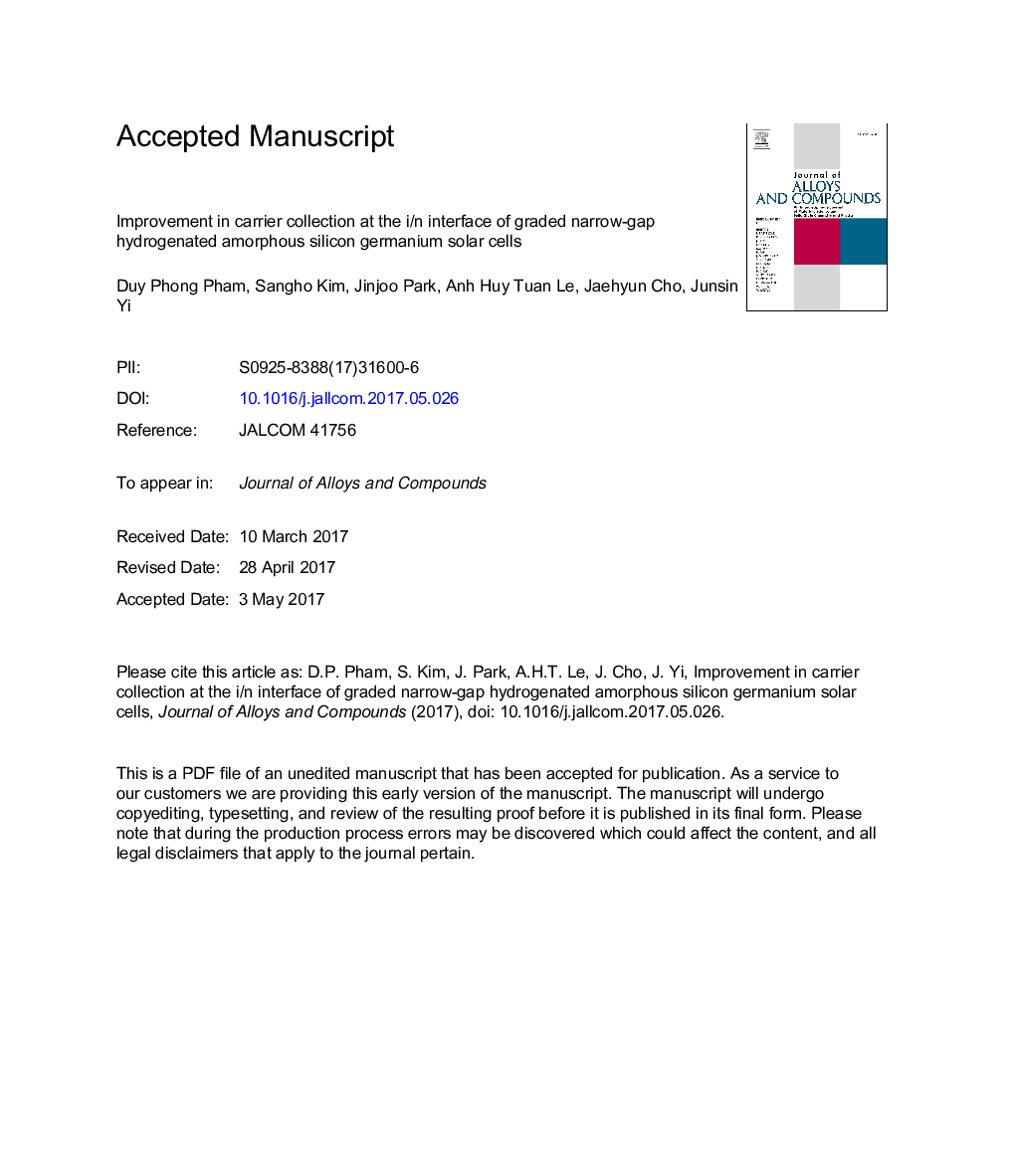| Article ID | Journal | Published Year | Pages | File Type |
|---|---|---|---|---|
| 5460107 | Journal of Alloys and Compounds | 2017 | 27 Pages |
Abstract
We examined different buffer layers at the i/n interface of narrow-gap amorphous silicon germanium alloy (a-SiGe:H)-based thin-film solar cells. These buffers included a conventional hydrogenated amorphous silicon (a-Si:H), an inversely graded hydrogenated amorphous silicon germanium, and a crystalline seed buffer (CSB). The solar cell with the CSB shows the highest performance, of 10%. The better carrier extraction at the rear side of the device is attributed to the role of the CSB layer. The effect of CSB thickness from 50Â nm to 100Â nm on cell performance was examined. Cell efficiency increased with the buffer thickness up to 80Â nm and decreased with buffer thickness of 100Â nm. This decrease can be attributed to increased defect densities of the buffer due to less efficient passivation of amorphous phase at the crystalline column boundaries.
Keywords
Related Topics
Physical Sciences and Engineering
Materials Science
Metals and Alloys
Authors
Duy Phong Pham, Sangho Kim, Jinjoo Park, Anh Huy Tuan Le, Jaehyun Cho, Junsin Yi,
